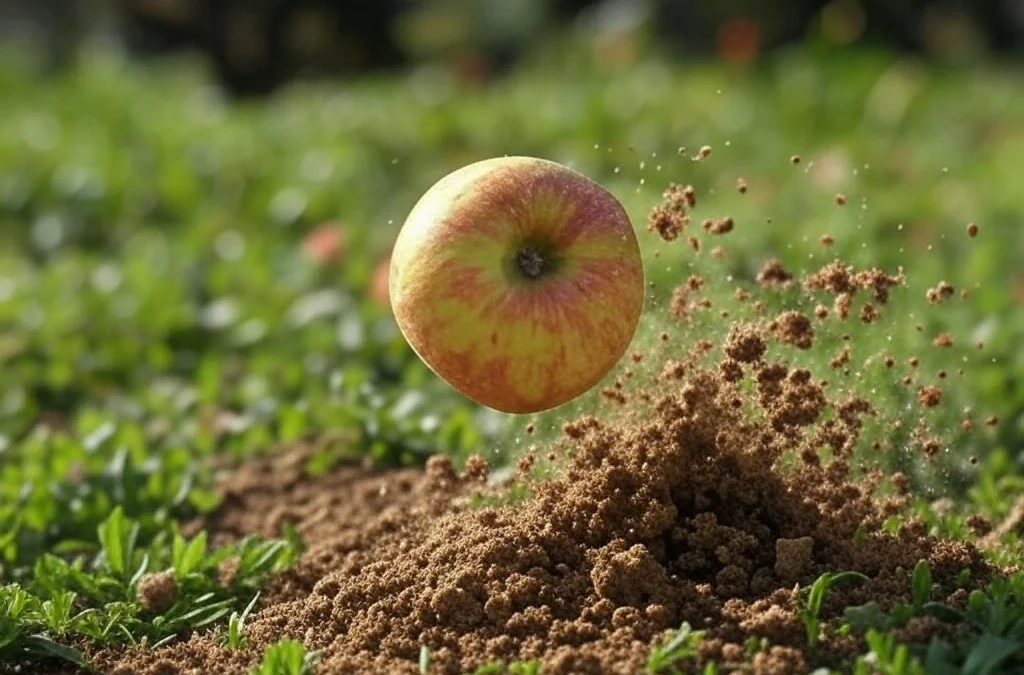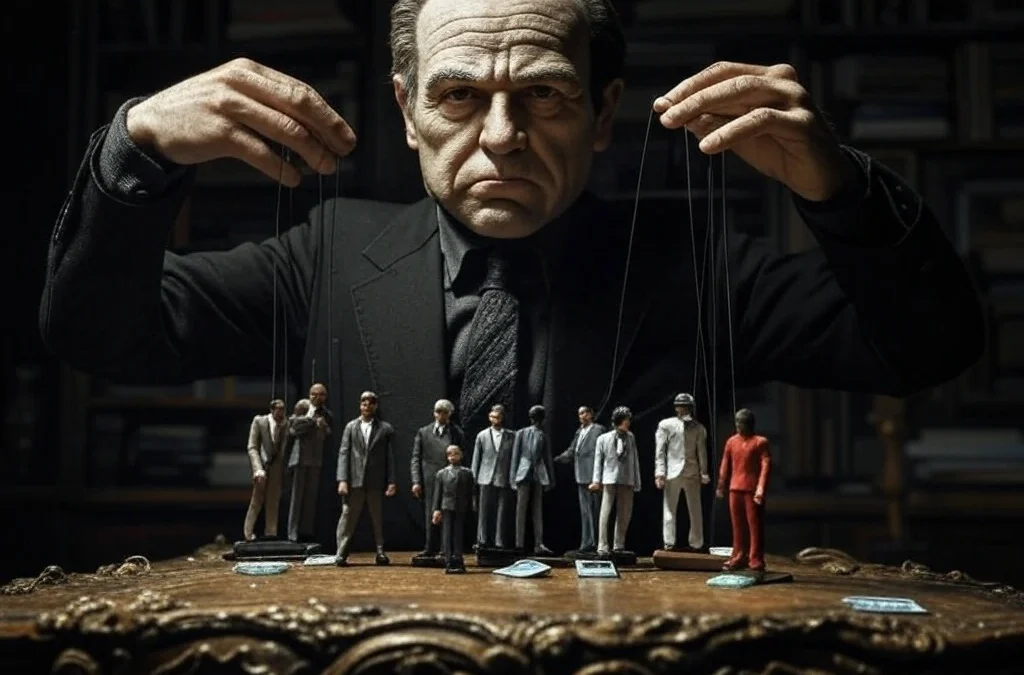Have you ever looked at a picture and had to do a double take because something seemed off? Illusions have a fascinating way of playing tricks on our minds, making us question what we see. Whether it’s a photo that appears to be moving or an image where two different things can be seen depending on how you look at it, illusions captivate us by bending reality. These mind-bending visuals are more than just fun party tricks; they reveal how our brains process information in surprising ways.
Imagine you’re driving on a hot summer day, and up ahead, the road seems to shimmer with water. It’s not a puddle, but a mirage – an illusion created by the heat. This everyday occurrence is just one example of how our senses can be deceived. In this article, we’ll explore 20 examples of illusions that showcase the quirks and marvels of human perception. From classic optical illusions to modern digital deceptions, prepare to see the world in a new light and understand why our brains sometimes see things that aren’t really there.
What is Illusion?
An illusion is a misleading experience where what we perceive doesn’t match reality. It happens when our senses, especially vision, interpret something incorrectly, creating a false impression. Illusions can trick our eyes, ears, or even touch, leading us to believe something is there – or happening – when it isn’t.
These phenomena occur for many reasons. Physical factors like lighting, angles, or distance can distort what we see. On the other hand, cognitive factors, such as our expectations or past experiences, can shape how we interpret sensory input. For example, a shadow might change how we perceive an object’s color, or a sound might seem to come from a different direction.
Illusions are more than just visual tricks – they reveal how the brain processes the world. They show how we rely on context, patterns, and assumptions to make sense of what we see and hear. Whether it’s a mirage on a hot road, an optical design that appears to move, or a sound that seems endless, illusions remind us that perception is not always perfect.
The Best Examples of Illusion
Illusions are intriguing tricks that fool our senses or minds, showing how perception can differ from reality. They reveal the gap between what we see and what actually exists. Below are twenty famous examples that illustrate what illusions are and how they work.
1. The Müller-Lyer Illusion
In this classic optical illusion, two lines of the same length appear to be different because of the arrow-like ends. One line has outward-pointing arrows, while the other has inward-pointing arrows. Our brain misinterprets the depth cues, making the lines seem unequal. This shows how context can influence what we see.
2. The Ames Room
The Ames Room is a specially constructed room that looks normal when viewed through a peephole. However, its true shape is distorted. People standing at different spots in the room appear to change size dramatically. This illusion tricks our depth perception and shows how we rely on familiar geometry.
3. The Kanizsa Triangle
This illusion involves three black circles with segments cut out and three angles that suggest a triangle. The triangle isn’t really there, but our brain fills in the gaps. It’s a clear example of how our mind adds information to create a complete image, even if it doesn’t exist.
4. Mirage in the Desert
A mirage occurs when heat bends light rays, creating the illusion of water or distant objects on the horizon. This is common in deserts or on hot roads. While nothing is there, the light tricks our eyes into seeing reflections. It’s a vivid example of how environmental conditions affect perception.
5. The Dress (Blue and Black or White and Gold)
This internet-famous photo sparked debates about whether a dress was blue and black or white and gold. The difference arises from how individuals perceive lighting and color. This illusion highlights how subjective our perception of color can be, depending on lighting and context.
6. Rotating Snakes Illusion
This static image appears to move because of the interaction of colors and shapes. When you shift your focus, the circles seem to rotate. This illusion demonstrates how visual cues like contrast and edges can create a sense of motion in stationary objects.
7. The Rubber Hand Illusion
In this psychological experiment, a fake rubber hand is placed in front of a participant while their real hand is hidden. When both are stroked simultaneously, the participant starts to feel the sensation in the rubber hand. This illusion shows how our sense of body ownership can be manipulated.
8. The Checker Shadow Illusion
In this illusion, a checkerboard is shaded, and two squares labeled A and B appear to be different colors. In reality, they are the same color, but the shadow tricks your brain into interpreting them as different. This example highlights how context and lighting influence color perception.
9. The Impossible Triangle (Penrose Triangle)
This is an optical illusion of a triangle that looks connected but is geometrically impossible. The structure seems logical at first glance, but closer inspection reveals it defies spatial reality. It’s a great example of how our brains try to make sense of the impossible.
10. Magic Tricks
Magicians use sleight of hand and misdirection to create illusions. For instance, a magician may “vanish” a coin by distracting the audience’s attention. These illusions rely on manipulating how people process information, making them fun yet insightful examples of cognitive trickery.
11. The Hollow Mask Illusion
A hollow mask of a face, when viewed from the inside, appears to pop out and look normal. This happens because our brain is wired to see faces as convex. The illusion is so strong that even when we know the mask is hollow, it still tricks us. It’s a clear example of how deeply ingrained facial recognition is in our perception.
12. Motion Aftereffect
After staring at a moving object, like a spinning wheel, and then looking at a stationary surface, the surface seems to move in the opposite direction. This is called the motion aftereffect. It shows how our eyes and brain adapt to motion and can be “fooled” when the motion stops.
13. Shepard’s Tables
This illusion involves two tabletops drawn in perspective. Despite looking different in size, they are identical. Our brain misinterprets the depth cues, making one appear longer. It’s a great way to see how perspective can distort our understanding of size.
14. The Troxler Effect
Stare at a fixed point in an image, and the surrounding details begin to fade or disappear. This happens because our brain filters out unchanging information to focus on what’s important. It’s a good example of how the brain prioritizes sensory input.
15. The Waterfall Illusion
After watching a waterfall for a while and then looking at nearby rocks, the rocks seem to move upward. This is another form of motion aftereffect, where prolonged exposure to movement creates a false impression of motion in the opposite direction.
16. The Bent Spoon in Water
A spoon placed in a glass of water looks bent at the surface. This occurs because light refracts (bends) when it passes through water and air, creating a distorted image. It’s a simple yet effective example of how light can create illusions.
17. The Disappearing Dots Illusion
This optical illusion features a grid with black dots at intersections. When you try to focus on one dot, others seem to vanish. It’s an example of how our visual system struggles to process high-contrast images at peripheral vision.
18. Forced Perspective in Photography
Think of a picture where someone appears to hold the moon or a tiny person stands on someone’s hand. Forced perspective tricks the viewer by using angles and distance to distort size relationships. This illusion is often used in creative photography and films.
19. The Leaning Tower Illusion
When two identical images of the Leaning Tower of Pisa are placed side by side, the one on the right appears to lean more. This illusion shows how our brain interprets perspective and depth, even when there’s no actual difference between the images.
20. Auditory Illusions
Illusions don’t just trick our eyes; they can fool our ears too. For example, the Shepard Tone creates the impression of a sound endlessly rising in pitch, even though it loops. This shows how sound can manipulate our perception just as powerfully as visuals.
Types of Illusion
Illusions come in many forms, each affecting how we perceive the world in unique ways. They often trick our senses, leading us to see, hear, or feel things that aren’t quite as they seem. These illusions can be grouped based on the senses they target or the way they manipulate perception.
Optical illusions are among the most common. They play with light, perspective, and patterns to create images that deceive our eyes. For example, some optical illusions make static pictures appear to move, while others distort the size or shape of objects. This happens because the brain tries to make sense of incomplete or conflicting visual information, often filling in gaps with assumptions.
Auditory illusions are equally fascinating but less well-known. These occur when sounds are interpreted differently by our brain. A well-known example is the Shepard Tone, where a series of tones seems to rise endlessly in pitch. This tricks the mind into hearing something that defies logic, showcasing how sound can be manipulated to create illusions.
Tactile illusions involve our sense of touch. These are less common but still powerful. For instance, if you place a rubber hand in front of someone while hiding their real hand and simultaneously stroke both, they may start to feel as if the rubber hand is part of their body. This shows how our sense of touch and visual input can combine to create a false perception.
There are also cognitive illusions, which don’t just rely on the senses but target how the mind processes information. These illusions take advantage of our expectations and assumptions about the world. A famous example is ambiguous images, like the “old woman or young lady” drawing, where the same image can be seen in two completely different ways depending on how your brain interprets it.
Each type of illusion gives insight into how our brains work. They reveal how complex and sometimes unreliable perception can be. Understanding these types helps us see the subtle ways our minds shape how we experience reality.
Visual Illusions: The Eye’s Deception
Visual illusions occur when what we see doesn’t match reality, tricking our perception in surprising ways. These illusions happen because of how our brain interprets visual input from the eyes. It often relies on context, patterns, and past experiences to make sense of what we see. While this process is usually accurate, it can sometimes lead to fascinating errors.
A well-known example is the Müller-Lyer illusion, where two lines of identical length appear different because of the arrowheads at their ends. This happens because the brain interprets the arrowheads as depth cues, creating the false impression that one line is longer. Another example is the Ames Room, where people standing at opposite corners appear to be drastically different in size. This illusion plays with perspective and our brain’s assumptions about room geometry.
Visual illusions often exploit our reliance on depth, color, and light. For instance, shadows can make two identical colors appear different, and contrast can trick us into seeing movement in still images. These illusions help researchers study how vision works and reveal the shortcuts our brain takes to process complex scenes quickly. They remind us that seeing isn’t always believing.
Cognitive Illusions: Perception Meets Thought
Cognitive illusions don’t just fool our senses—they reveal how our thoughts and assumptions shape our perception of reality. These illusions arise when the brain processes information based on context, memory, or expectations, often leading to surprising misjudgments. Unlike visual illusions, cognitive illusions are more about how we think than what we see.
A famous example is the ambiguous “old woman or young lady” image. Depending on your focus, you may see either figure first, but it’s hard to see both at once. This happens because the brain chooses one interpretation based on past experiences and expectations. Another example is the Stroop Effect, where naming the color of a word is harder when the word spells out a different color (e.g., the word “red” written in blue ink). This reveals how conflicting information can slow down thought processes.
Cognitive illusions also extend to how we assess risks or probabilities. For instance, the “availability heuristic” leads people to overestimate the likelihood of dramatic events, like plane crashes, because such events are easier to recall. This shows how memory and emotions influence judgment, even when they don’t reflect reality.
By studying cognitive illusions, we gain insight into how the brain processes information. They highlight the limitations of human thought and help us understand why our decisions are sometimes flawed. Recognizing these illusions can improve critical thinking and help us question assumptions in everyday life.
Psychological Impact of Illusions on Human Perception
Illusions play a significant role in how we perceive reality. Our brains interpret sensory information to create a coherent picture of the world, but illusions can trick this process. Optical illusions, for instance, exploit the brain’s reliance on context and past experiences. They demonstrate how easily our perception can be manipulated. This isn’t just about visual trickery. Auditory illusions can make us hear things that aren’t there or distort sounds we expect to hear. This can be unsettling but also fascinating. When our senses deceive us, it can lead to introspection about the nature of reality itself.
Consider the famous “Rubin’s Vase” illusion. This image can appear as either a vase or two faces, depending on how you look at it. It’s a classic example of figure-ground perception. Our brains struggle to decide which part of the image is the figure and which is the background. This ambiguity reflects how we handle conflicting information in everyday life. The ability to see multiple perspectives is a valuable skill, not just for interpreting illusions but for navigating the complexities of human interactions. But let’s face it, sometimes it’s just plain confusing.
Illusions in Art and Their Influence on Culture
Artists have long used illusions to challenge viewers and make them question their perceptions. Trompe-l’œil, a technique that creates the illusion of three-dimensional space on a flat surface, has been employed for centuries. Street artists often use this technique to transform ordinary pavement into mind-bending visual experiences. These works invite us to engage with art in a more interactive way, blurring the line between reality and illusion. They captivate audiences worldwide, turning everyday spaces into extraordinary exhibitions.
Beyond visual arts, illusions have permeated literature and cinema. Writers and filmmakers use narrative twists and unreliable narrators to create stories that question what is real. These techniques keep audiences engaged, prompting them to think critically about the story. The impact of illusions in art extends beyond entertainment. They influence cultural narratives and how we understand the world. Illusions remind us that things are not always as they seem, encouraging us to look deeper and question our assumptions. And sometimes, they just make us laugh.
Read also: 30 Police State Examples & Definition
The Most Popular on BitGlint

40 Social Dilemma Examples in the World & Real Life
Social dilemmas are everywhere. They shape the choices we make at work, in our communities, and even on a global...

30 Favor Examples & Definition
Doing a favor means helping someone without expecting anything in return. It’s an act of kindness that can strengthen...

30 Naivety Examples & Definition
Naivety is something most people experience at some point in their lives. It often starts in childhood, but for some,...

20 Chronology Examples & Meaning
Chronology is something we use more than we realize. It shows up in conversations, in how we remember the past, and in...

30 Wishful Thinking Examples & Meaning
Wishful thinking is something we all do at some point. You hope things will turn out fine—even if there’s no real...

20 Examples of Gravity & What Gravity Really Is
Gravity is one of the most important forces in the universe, but many people don’t fully understand what it really is...

20 Examples of Secondary Consumers in the Food Chain
Secondary consumers are animals that eat other animals—usually herbivores that feed on plants. They’re an important...
Get Inspired with BitGlint
The Latest
30 Flow State Examples & Definition
Most people have felt it at some point — that rare moment when everything just clicks. You're working, moving, or thinking, and suddenly it's like the rest of the world fades out. You're focused, clear, and everything you're doing feels smooth and natural. That’s...

30 Cynicism Examples in Everyday Life & Definition
Cynicism is something most people have seen, heard, or even felt - but few stop to really think about what it means. It shows up in jokes, in conversations, and in quiet thoughts we don’t always say out loud. Some people wear it like armor. Others see it as honesty....
50 Examples of Square Things
Square things are part of everyday life, even if we don’t always think about them. From objects we use at home to tools, packaging, and design elements we see out in the world, the square shape is everywhere. It’s simple, balanced, and practical — which is exactly why...
20 Hinduism Examples: Symbols, Gods & Core Beliefs
Hinduism is practiced by over a billion of people every day - but for those unfamiliar with it, it can seem complex or even confusing. With its many gods, rituals, and traditions, it raises a lot of questions. What do Hindus actually believe? What are the main...

